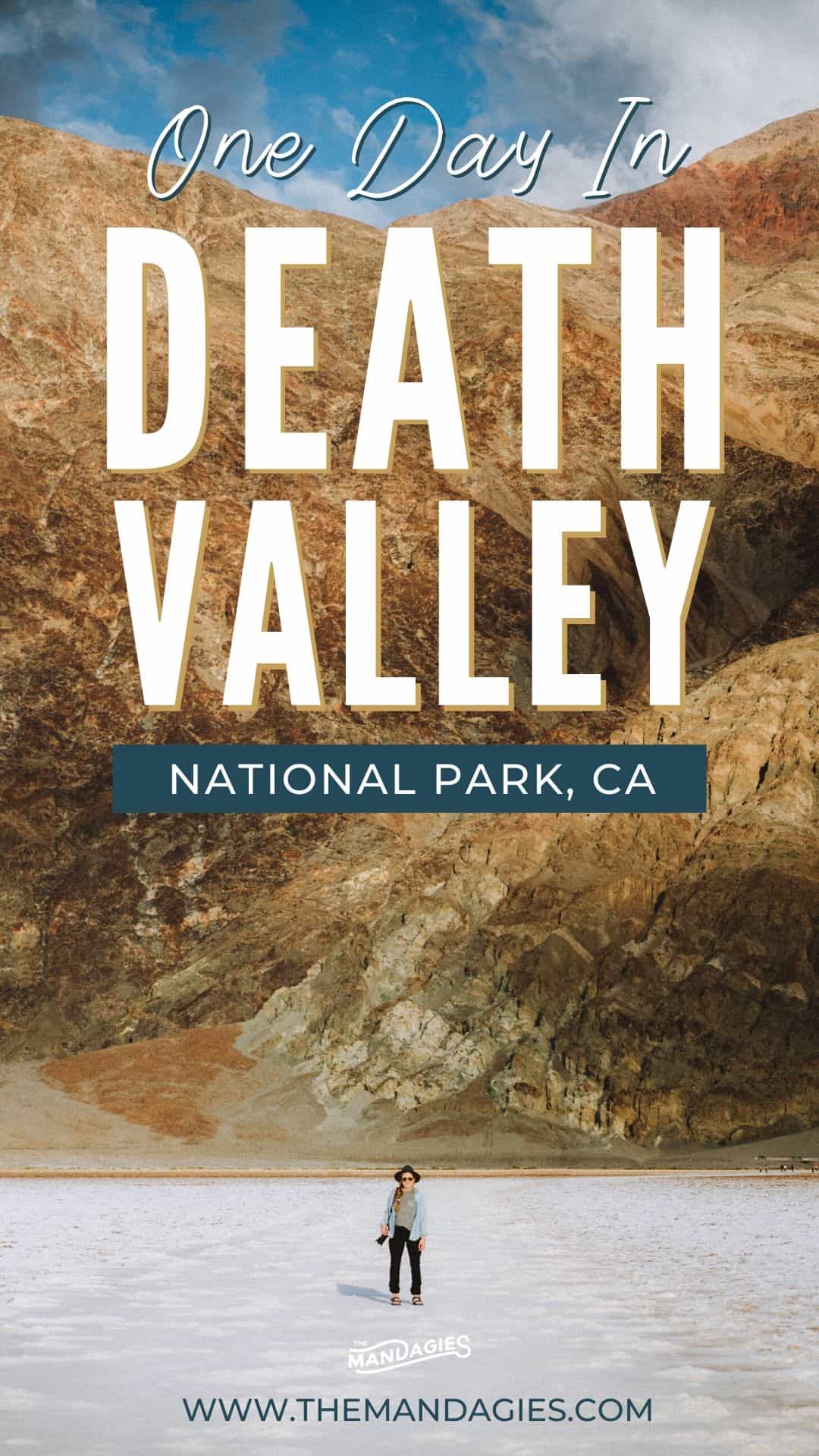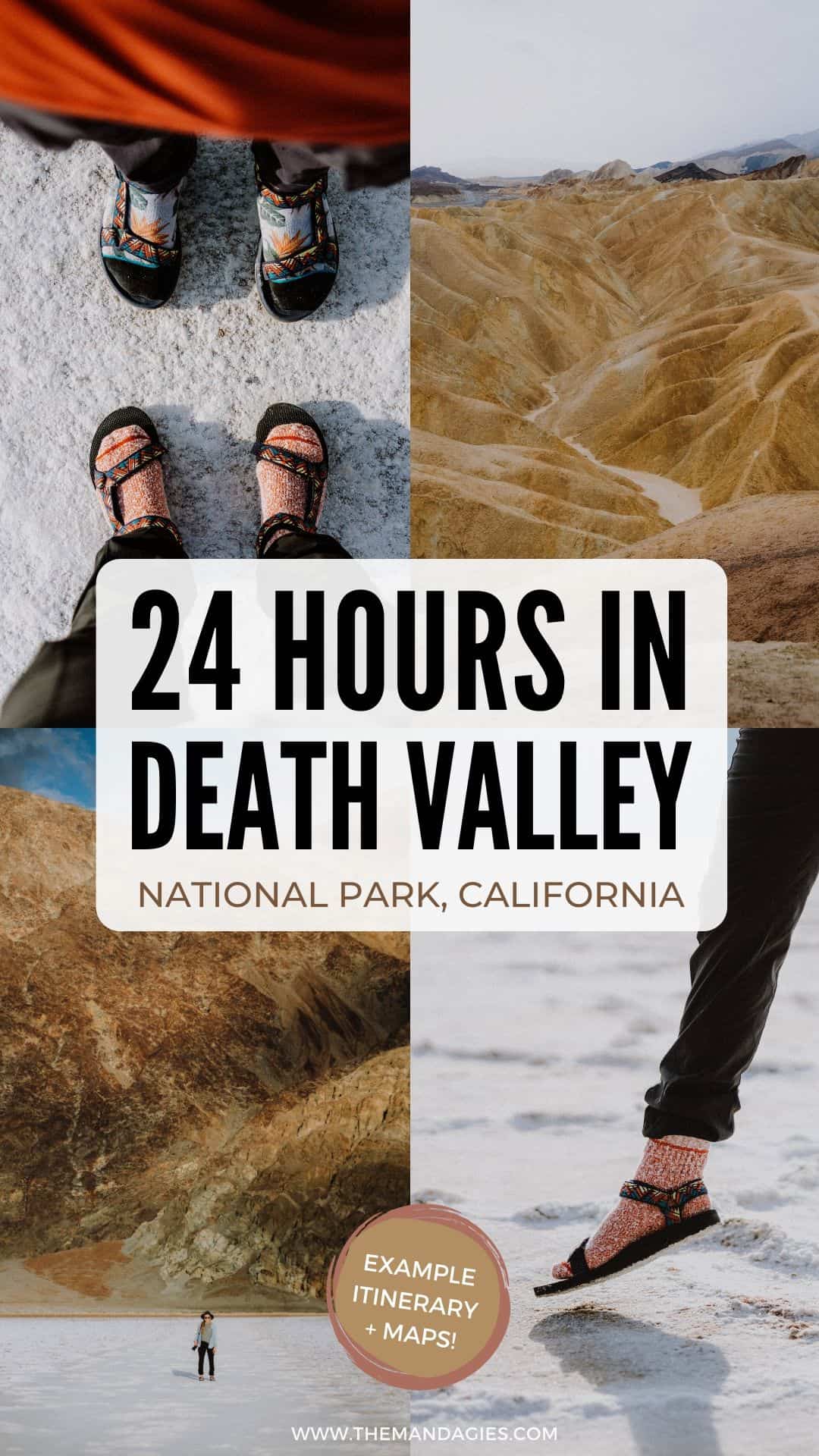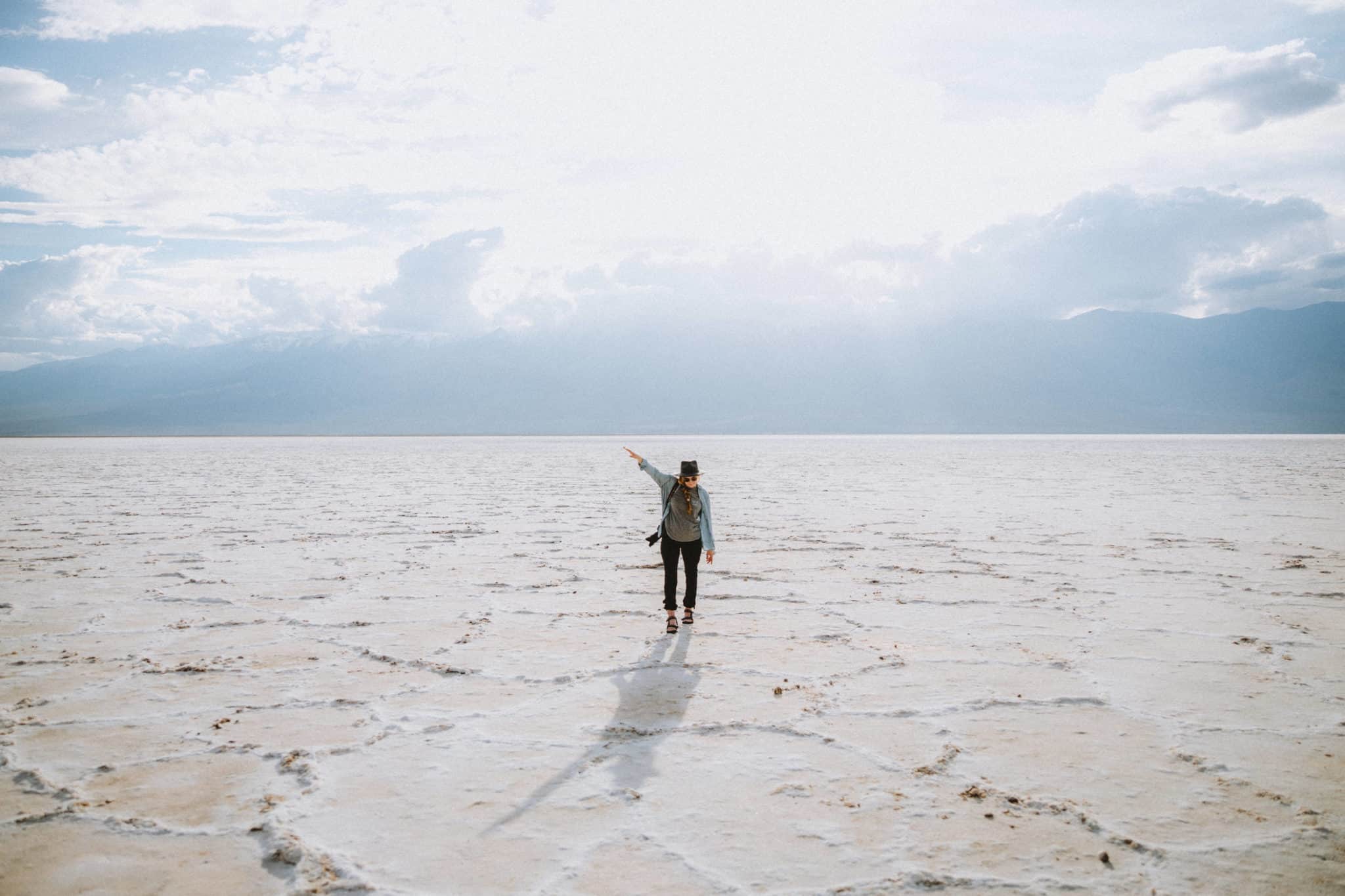Post Summary: The complete itinerary for Death Valley in one day
Only have one day to spare in Death Valley? This is likely just one stop on an epic Southwest road trip you’ve got planned!
We get it, there are so many amazing American Southwest destinations to see and you’re on a tight schedule!
That’s why we’ve created this ready-made 24-hour guide to see the best of Death Valley in 1 day.
We’re sharing the best camping spots, most ‘worth-it’ attractions, and how to pack as much in your schedule as possible!
Let’s not waste any more time – here’s your complete Death Valley one day trip!

What To See In Death Valley In One Day
Where Is Death Valley National Park?
Death Valley is a national park located in Southern California, east of the Sierra Mountains and bordering the state of Nevada.
While Death Valley may imply that no life is present, there is actually an abundance of desert plants and animals that live in the area!
Some of these living beings include coyotes, bighorn sheep, and even pupfish (when there is water present in the valley!)
So before you make assumptions about Death Valley, we encourage you to come and see it for yourself!
Keep scrolling for our guide to Death Valley in one day and how you can experience it to its fullest – even if you’re just passing through!
History of Death Valley National Park
Death Valley has been the home for many Indigenous people dating back to even 10,000 years ago!
Many of these groups (like the Timbisha Shoshone group) were hunters and gatherers that would make winter camps on the valley floor and escape up to the nearby mountains when the weather started heating up.
In the late 1800s and early 1900s, Gold Rush hopefuls and miners came flocking to the area in hopes of gaining riches off of precious gems.
These mining communities were successful for many years, but almost right after the mining boom, the small towns were quickly deserted.
In 1933, President Herbert Hoover declared the park “Death Valley National Monument” and in 1994 was renamed “Death Valley National Park” and expanded to include the Saline Valley and Eureka Valley.

How Death Valley Got Its Name
The Bennett-Arcane Party, commonly referred to as the ’49ers (a reference to the year 1849), headed westbound in the California Gold Rush and got lost taking a wrong turn through the valley.
Unable to find an exit, they were forced to find water from springs, eat their oxen, and burn their wagons for fuel. Eventually, they found an exit after weeks of searching.
Leaving on foot, one of the women was said to have turned around and said “goodbye Death Valley” thus giving it its iconic name today.

Best Attractions In Death Valley National Park
Death Valley is the hottest, driest, and lowest of all the contiguous US national parks (AKA of the lower 48 states).
Many of the park’s area is considered “wilderness” (91% to be exact) which means there are endless adventures to be had!
Below, we’ve included some of the best attractions to see that are nearby, and places that are convenient for a one day trip to Death Valley.
Keep reading to discover them all!


1. Mesquite Flat Sand Dunes
Mesquite Flat Sand Dunes are the most well-known and easy-to-reach sand dunes, perfect for visiting in Death Valley in one day. They can be easily accessed in the central Stovepipe Wells area, just off Highway 190.
There is a large parking lot that fills up fast during high peak season.
Here, you can wander around on foot to explore the 100-foot high dunes that spread over a vast area of the valley floor.
Make sure to wear lots of sunscreen, have sun (and sand!!) protection, and bring water along. The desert weather is harsh and the elements can be brutal in the middle of a hot summer day!
Trip Tip: Most people walk only a short distance from the parking lot and stop. If you’re hoping to explore with fewer people around, walk FAR from the car towards the large sand dunes.
Note: These are NOT the only sets of sand dunes located in Death Valley National Park. However, they are the most convenient for your trip to Death Valley in one day!
Other dunes to include on a trip in Death Valley:
- Eureka Dunes
- Panamint Dunes
- Saline Valley Dunes
- Ibex Dunes
Want to Explore Closer Dunes In The PNW? Discover Bruneau Sand Dunes In South Idaho

2. Dante’s View
Dante’s View is a viewpoint at the top of the Black Mountains that will give you panoramic views of Death Valley below.
Sitting at nearly 5,500 feet above sea level, you are essentially looking down at Badwater Basin, which is 282 feet below sea level!
There are several trails here, including this one above, that brings you to the edge of the crest, offering a dramatic view below.
We suggest coming here for sunrise or sunset when the weather is cooler. This way, you can explore at a slower pace, without having to try to beat the heat!
Another Stunning Place at Sunset: Best Viewpoint At Canyonlands National Park
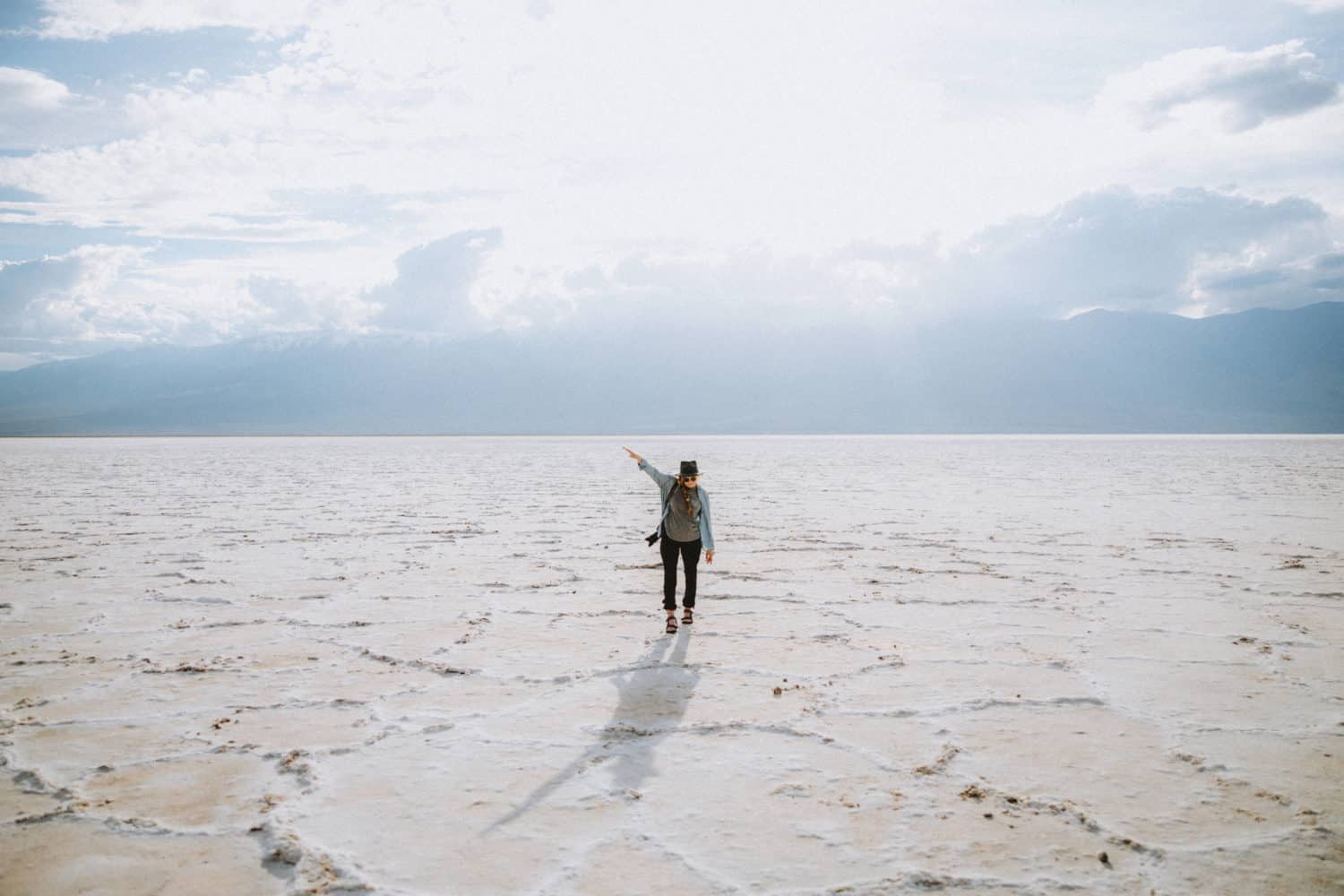

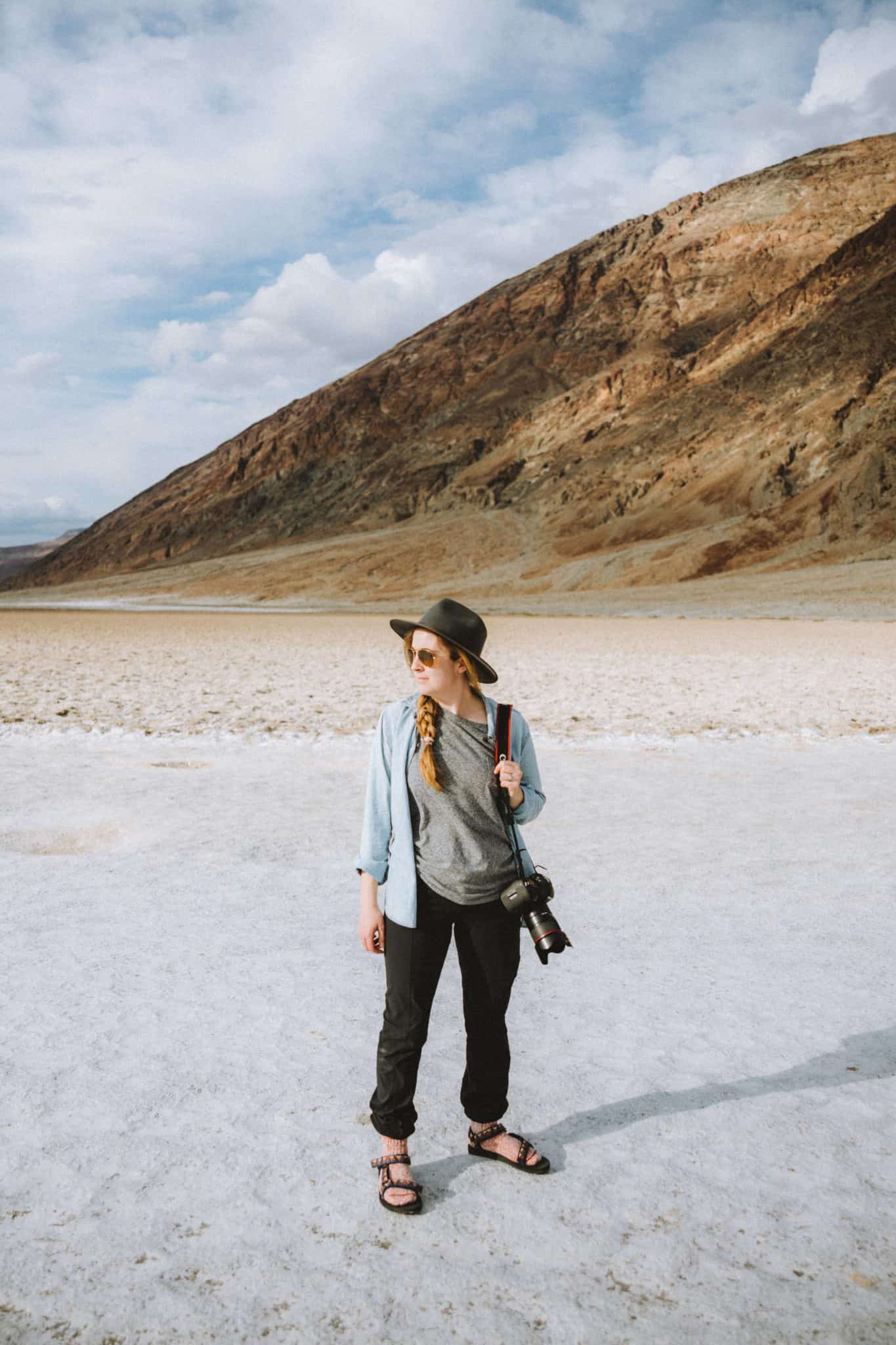
3. Badwater Basin
Badwater Basin is the lowest elevation point in North America.
Sitting at 282 feet below sea level, it’s actually ironic that it’s only 84.6 miles away from the highest point in the lower 48 – Mount Whitney (which is 14,505 feet above sea level).
Depending on what time of year you visit, the basin can look very different. Our last trip was in late March and we were able to see “bad” water collect at the bottom.
We also took a walk pretty far deep into the middle, admiring the patterns the salt made on the valley bed.
If you are visiting during summer, here are a few suggestions for a safe trip:
- The basin gets very VERY hot on those peak summer days. The hottest day ever recorded in the valley was 134 degrees F.
- We suggest visiting at sunrise for the coolest and most bearable weather.
- Bring sunscreen, water, and a hat for protection from the elements.
- Have fun! Try and taste the salt if you’re brave!
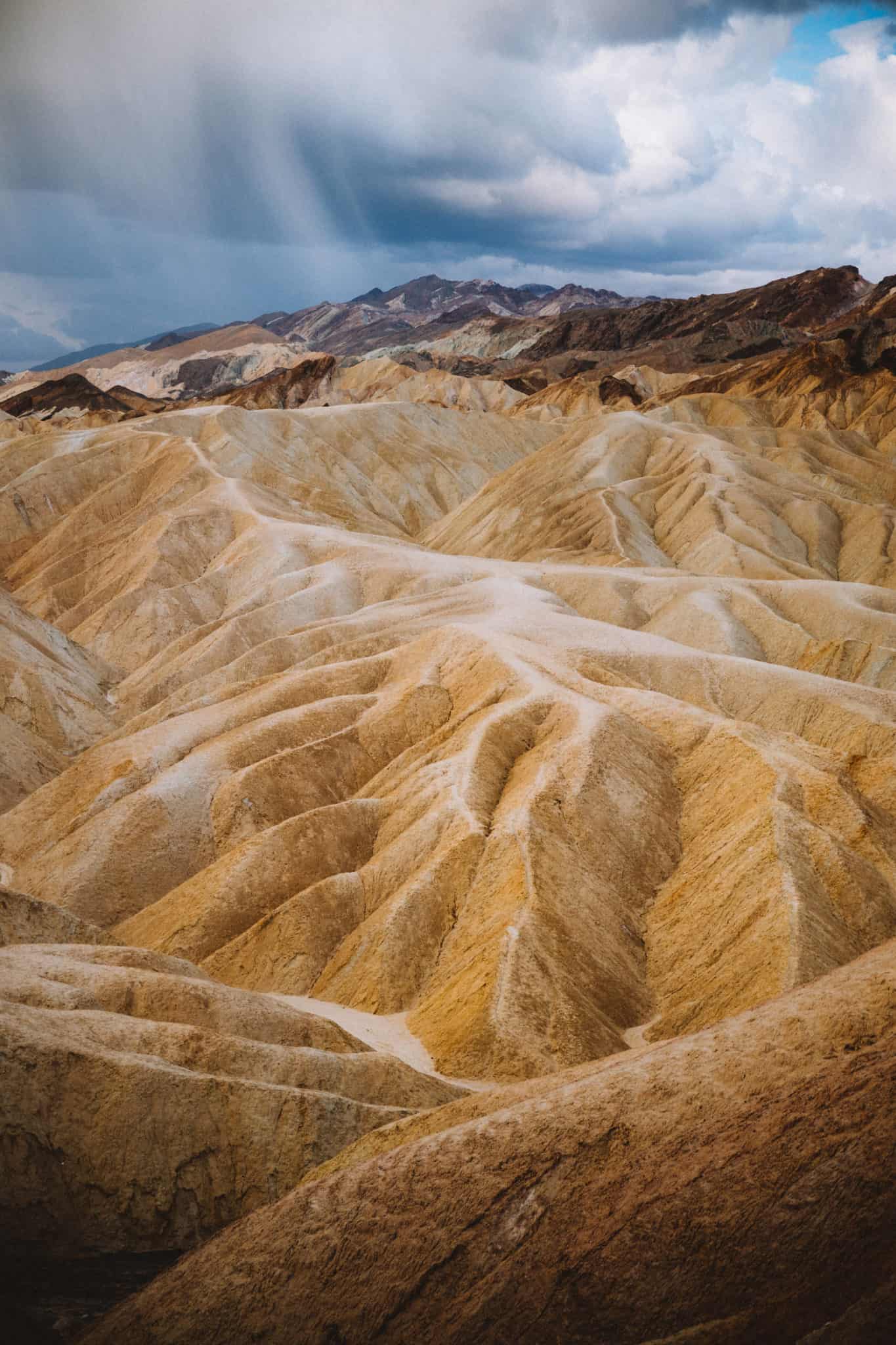

4. Zabriskie Point
Zabriskie Point is a viewpoint that displays a panoramic view of the eroding landscape of the Amargosa Range.
This is an area of settled sediment from the ancient Furnace Creek lake bed, and the weather and rain slowly erode the delicate structure away. Thus creating the deep grooves you see today!
The yellow and brown colors in the hills are different sand and sediments that settled on the bottom in layers many years ago.
Coined as Death Valley’s “Badlands”, this area is a perfect pit stop while driving through Death Valley in one day. It’s an easy pullout from Highway 190.
Love Photography? This is probably the most popular spot to take photos in Death Valley!
The sharp ridges, dramatic colors, and changing light (it looks really great during sunrise) are just a few of its attractive qualities.
READ MORE: Discover The Real Badlands In South Dakota During Autumn

5. Natural Bridge
GPS Coordinates: 36.16521 N -116.46119 W
If you’re looking for a way to beat the heat, Natural Bridge trail is an excellent hike in Death Valley National Park. The path starts rocky but quickly turns into a trail through a shaded canyon.
There is no need to worry about going too far because after 0.5 miles the trail abruptly stops at a dry waterfall. Turn back the way you came and enjoy the natural stone arch along the way!
The entire trail length is one mile.
Natural Bridge Trailhead provides ample parking space for even the biggest RVs, but the parking lot fills up fast in peak season. Come early to snag a spot and see this place for yourself.
Other quick and easy hikes to do in Death Valley in one day:
- Harmony Borax Works (0.4 miles)
- Salt Creek Interpretive Trail (0.5 miles)
- Badwater Basin (1 mile)
- Mesquite Flat Sand Dunes (up to 2 miles)
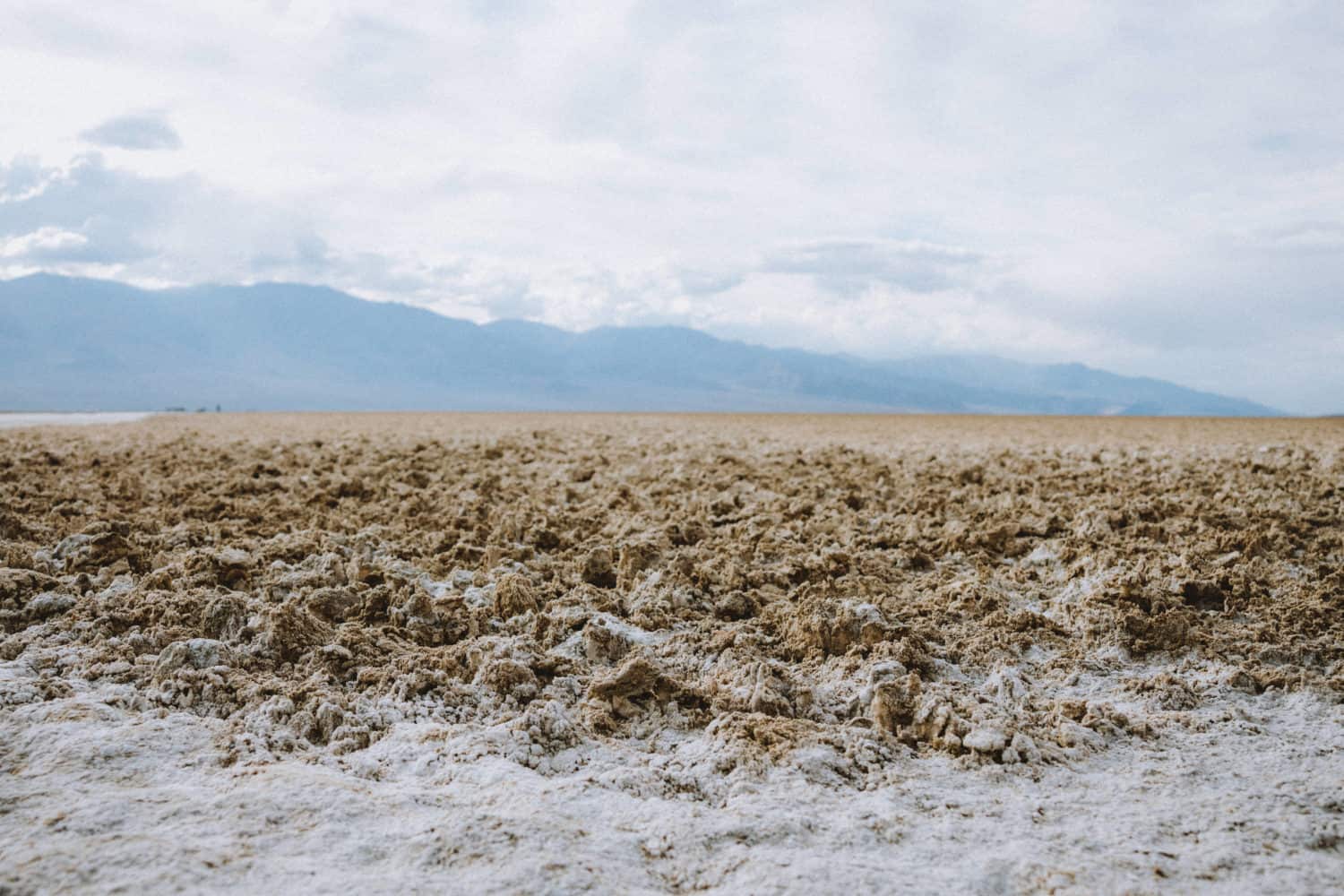
6. Devil’s Golf Course
Because of the rough texture of this salt pan on the base of Death Valley, this area was coined “Devil’s Golf Course” because “only the devil could play golf” in this area.
Once a lake bed, this area has now dried up leaving salt formations in its place. Over time, the weather and elements have worn away at the surface, creating the rough texture Devil’s Golf Course has today.
This area can easily be seen with only one day in Death Valley to spare because it’s on the way to other attractions like Badwater Basin and the Natural Bridge trail.
There are many pullouts on the side of the road, so pick your favorite spot and snap a few pics on your way through!
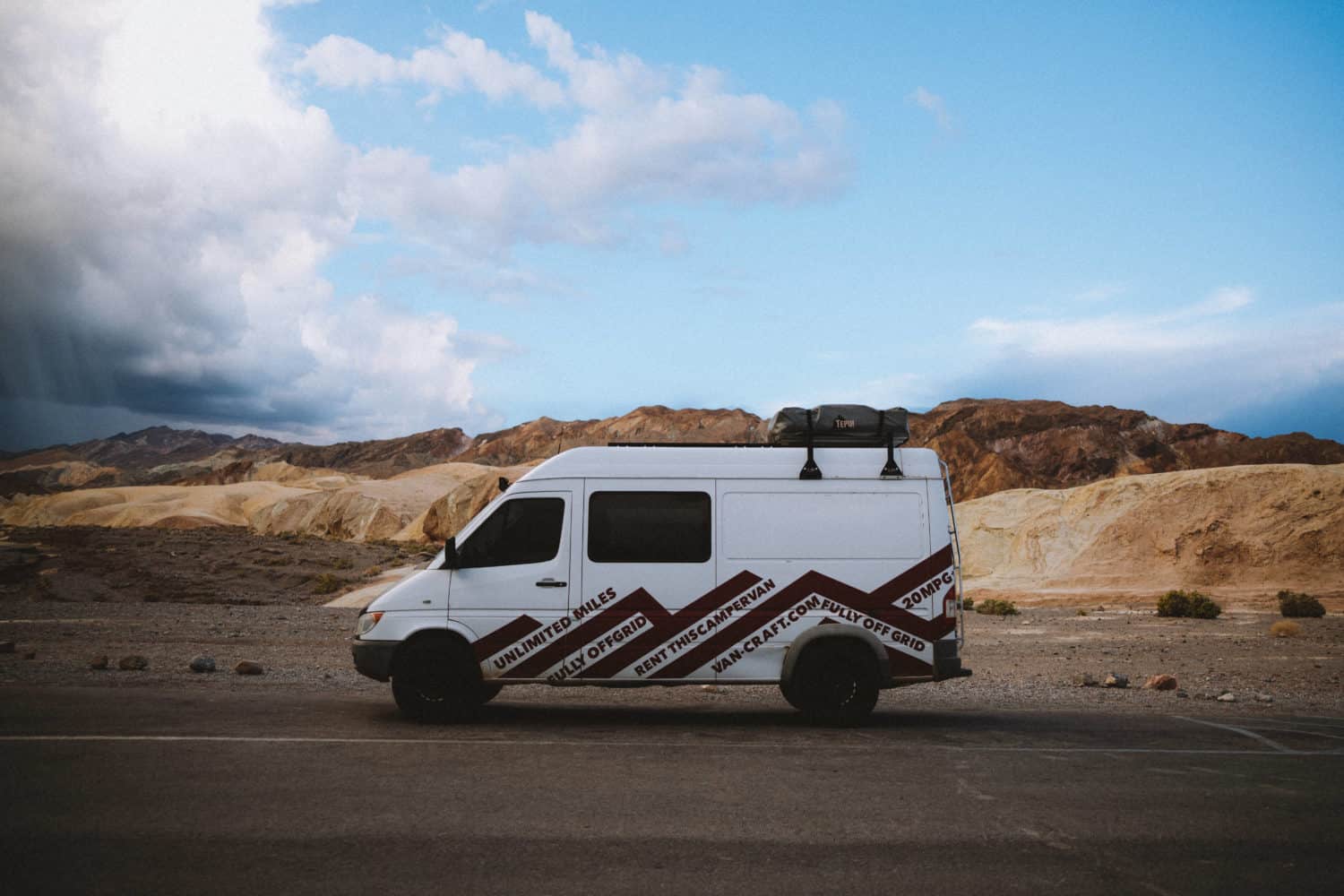
7. Furnace Creek
This is the only place you will find reliable cell service in the National Park. Everywhere else will be a gamble depending on your service provider!
Furnace Creek is a great place to stop on by the Visitors Center to ask some of your burning questions.
Our questions were about backcountry camping, and where we could sleep in the park for free. The Rangers were extremely helpful and we found a convenient and easy place to sleep in our car for the night!
Map Note: In order to receive a park map from the rangers, you have to prove that you’ve paid your entrance fee. This can be proven through your Annual Park Pass or your $30 stub at the entrance booth.
They’ll make you pay before you can have the map!
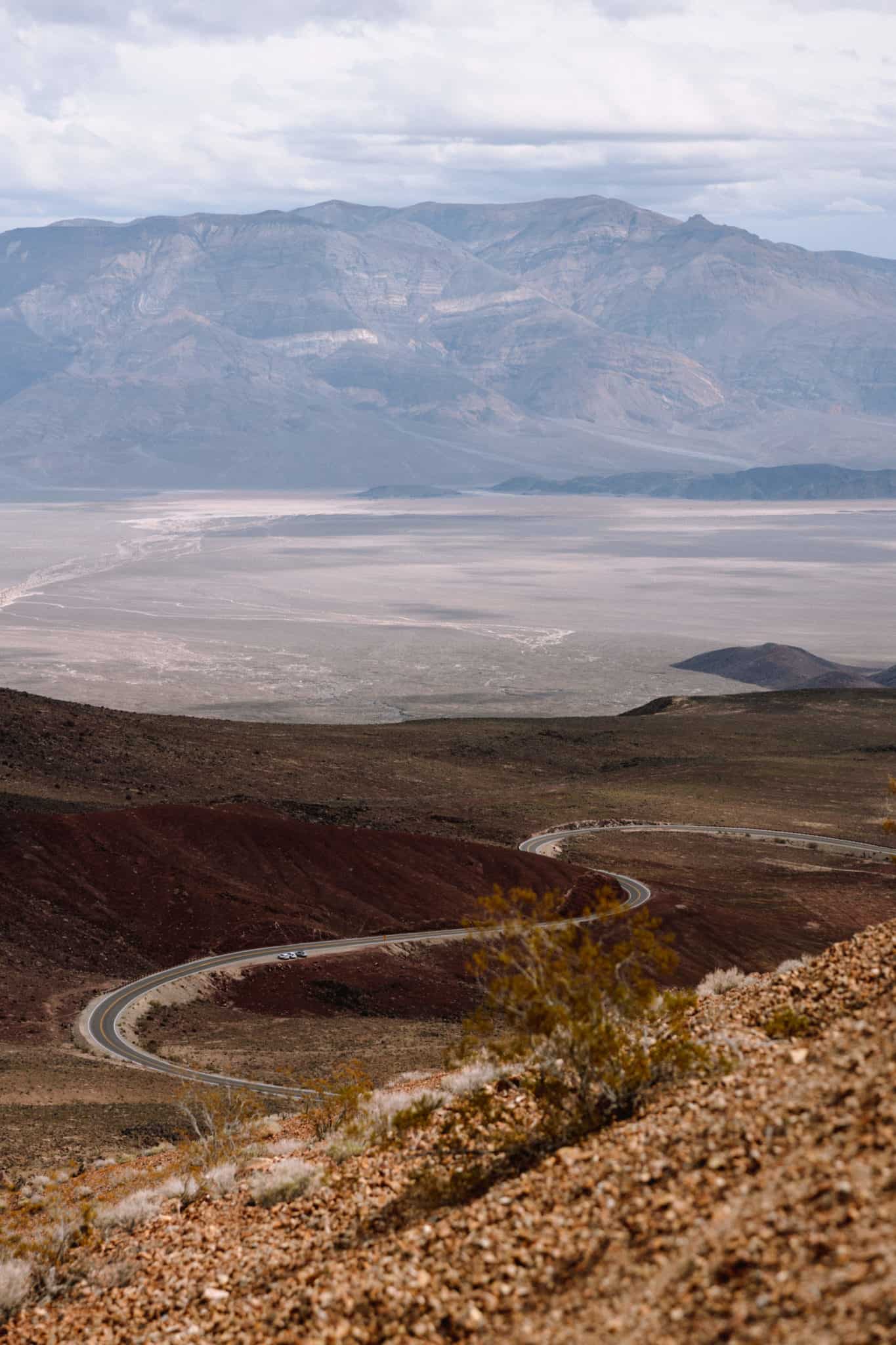

8. Father Crowley Overlook
Google Maps Directions: North Side Of CA 190
All of a sudden a fighter jet blasts through the sky and down into the valley below…
Little did we know that Father Crowley Overlook acts as a training ground for pilots!
This famous overlook is popular for visitors to come and get a glimpse (if you can!) of these planes zooming through the narrow canyons to test their navigation and coordination.
It’s almost impossible to predict when they will fly through. If you’re lucky like us, you’ll see some dedicated visitors with camping chairs set up and radios on to listen to any hint that one may be coming soon.
If you only have time for Death Valley in one day, try to start your journey this way via CA Highway 190 and make a quick stop here to spot a fighter jet!
Other Things To Do In Death Valley National Park
These Death Valley attractions below are equally as awesome but require a bit more driving to reach them.
These are better saved for a longer trip back to Death Valley. However, if your plans change and you hope to extend your one day trip to Death Valley, here are some more places to check out:
- Charcoal Kilns
- Twenty Mule Team Canyon Drive
- Ubehebe Crater
- Eureka Dunes
- The Racetrack (must have a 4×4 high clearance vehicle)
- Golden Canyon Trail
- Rainbow Canyon
- Mosaic Canyon
- Keane Wonder Mine
- Manly Beach

When Is The Best Time To Visit Death Valley?
The best months to visit Death Valley National Park is November through March. It’s actually one of the best national parks to visit in the December, because the temperature is cooler and the days tolerable!
This is because Death Valley has a desert climate, and temperatures can be dangerously hot in the summer seasons (May through September).
While this California National Park is open all year – you may encounter the hottest days June through August.
If you are coming in the summer, it’s best to plan your visits in the mornings and evenings when the sun is not so high.


Death Valley In One Day: Example Itinerary
Looking for a step by step one-day itinerary for Death Valley? Here is an example day, from sun up to sun down! We suggest camping one night to get the full desert experience!
Note: This is a 24-hour period across two separate days!
Day 1:
- Enter from the west side via Panamint Springs
- Explore the Mesquite Flat Sand Dunes
- Chat with the Rangers at Furnace Creek Visitors Center
- Explore Devil’s Golf Course
- Walk around Badwater Basin at sunset
- Camp at Death Valley National Park campsites (reserve them here)
Day 2:
- Watch the sunrise at Dante’s View
- Snap some pictures at Zabriskie Point
- Hike the Natural Bridge Trail
- Leave the park via Highway 190 towards Las Vegas, NV
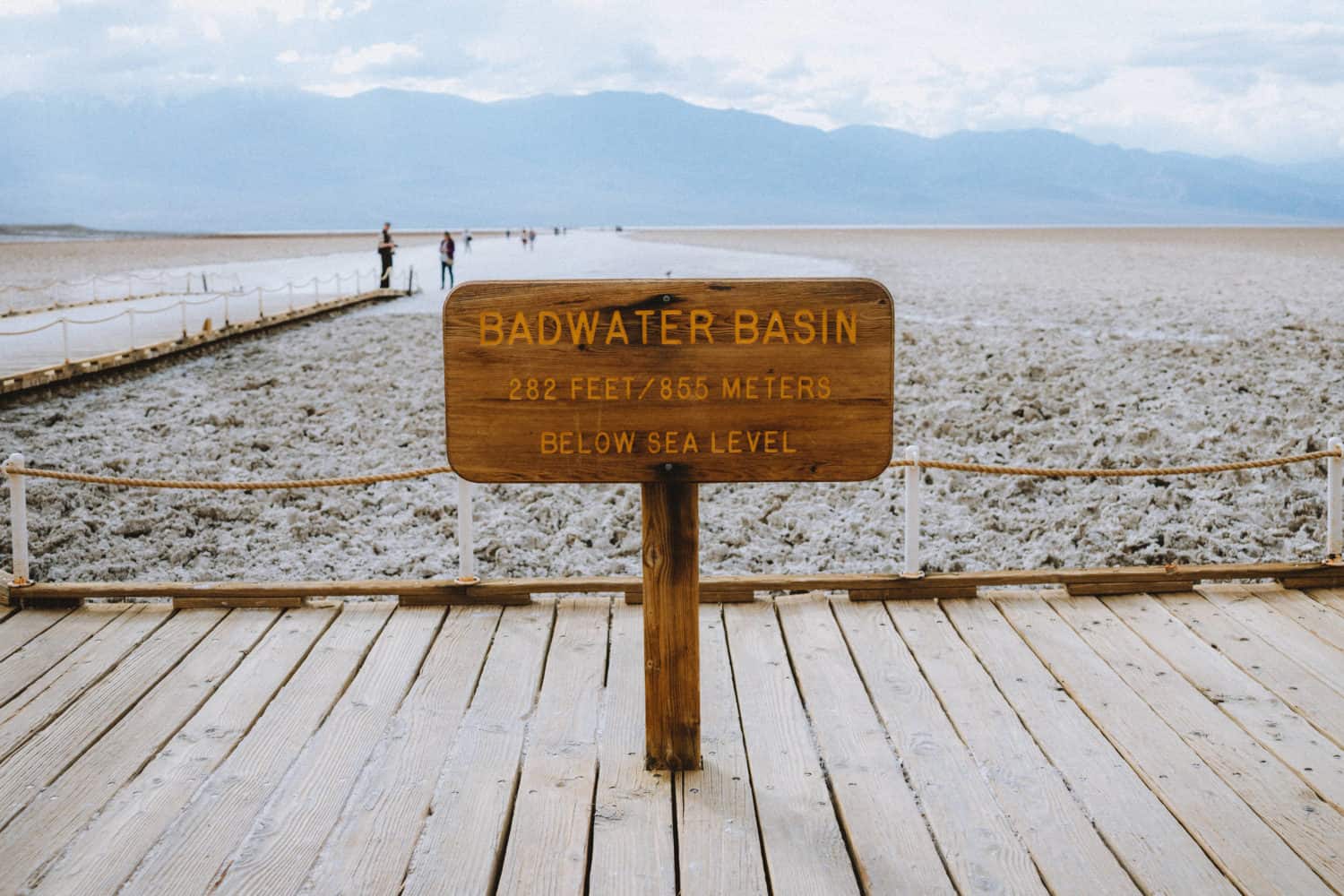
Camping In Death Valley
Looking to make the most of Death Valley in one day? We highly suggest camping in Death Valley, even if it is for only one night!
There are many established campsites with bathrooms and amenities near the main attractions in Death Valley. Some of these campgrounds include:
- Sunset Campground
- Stovepipe Wells Campground
- Furnace Creek Campground (reservation required)
- Texas Springs Campground
- Mesquite Spring
- Emigrant Campground (tents only)
- Wildrose Campground
- Thorndike Campground
- Mahogany Flat Campground
Click here for availability and locations for each Death Valley camping location. Note – all campgrounds are first-come-first-serve, except for Furnace Creek CG!
You can also opt to look for your own backcountry camping spots. Just ask the rangers and they will provide you with a map of backcountry roads suitable for overnight stays.
If you are looking for places to camp AROUND Death Valley too, we highly suggest downloading The Dyrt, the largest campground finding app on the market! The Pro membership allows you to browse campgrounds offline (for last-minute spots!) map the best route to all of your campgrounds, and see the latest reviews and photos from other campers. Try their pro membership free for 30-days when using our code MANDAGIES!
Note: Some backcountry campsites require high-clearance vehicles, so make sure to ask before you venture out!
Want To Camp For Free? Read Our Complete Guide To Finding Free Camping (Even In Death Valley!)

Map of Things To See In Death Valley National Park
More of a visual planner? Below, we’ve created a map of the most popular attractions for a Death Valley one day itinerary.
Use this map as a resource for planning your epic day!
More Southwest Adventures
Amazing Sedona Hiking Trails To Explore In Arizona
The Best Southwest Road Trip Itinerary (All The Best Stops) – Coming Soon
How To Find The Iconic Movie Road In Alabama Hills
The Complete List of Iconic Southwest Destinations You Have To See To Believe
How To Plan A Utah National Parks Road Trip (All 5 Parks In Our Trip!)
11 Amazing Hikes In Arches National Park To Experience


